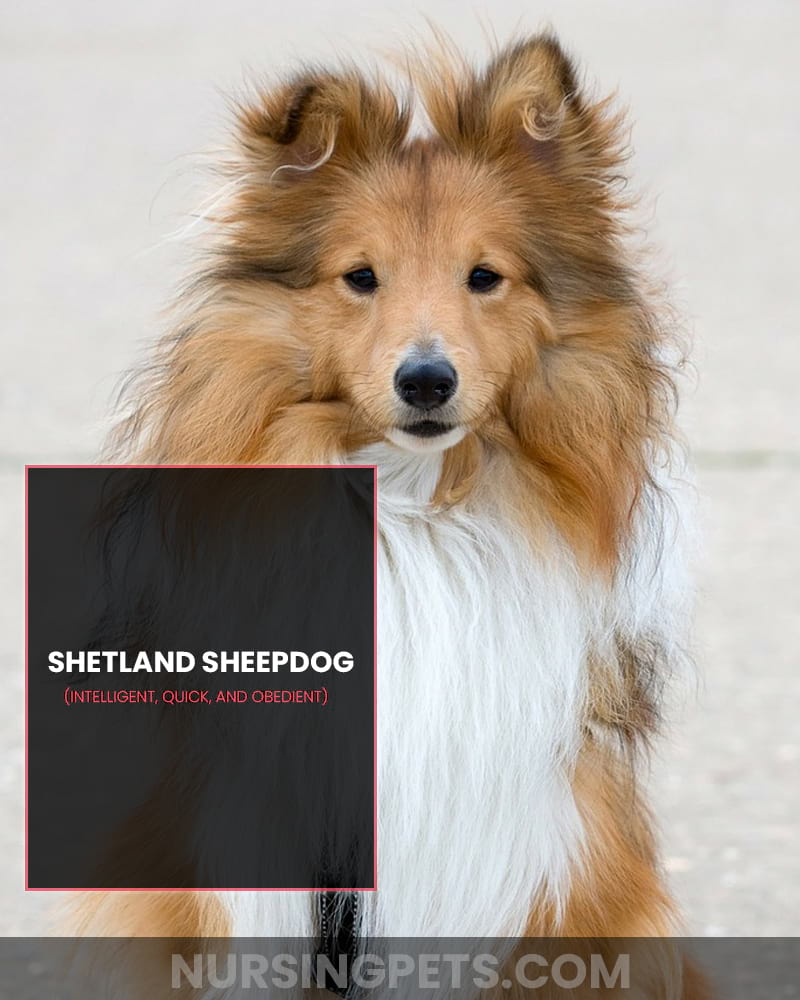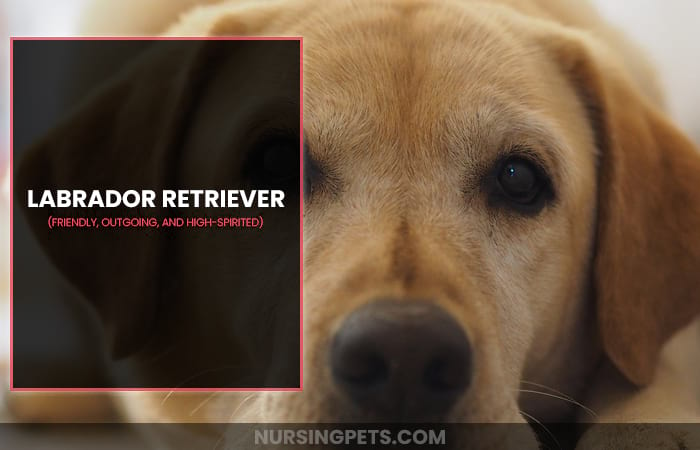What Are The Smartest Dog Breeds? Top 10 Varieties
Do you know there is no straightforward way to measure dog intelligence? That’s why you have to choose a dog based on its working intelligence (the ability to following orders), adaptive intelligence (the ability to figuring stuff out), intuitive intelligence, and more.
For human beings, dogs are one of the cutest and most lovable pets among all other choices. However, their intelligence alone doesn’t naturally make them great pets. To bring out their standard smarts, you have to reflect on the breed.
Now, the question is, what are the smartest dog breeds? The smartest dog breeds include Border Collie, Poddle, German Shepherd, Golden Retriever, Doberman Pinscher, Shetland Sheepdog, Labrador Retriever, Papillion, Bloodhound, Rottweiler, etc.
In this article, we’re now going to talk about what the smartest dog breeds are. We’ll also reply to some frequently asked questions many dog lovers usually ask us about dog breeds. You will get to know which breed will be your best pet.
So, without further ado, let’s get started!
Handy Hint: to read more about dogs, visit our other article about dogs eat grass [here] and why are my dog’s paws so rough [here].
Top 10 Smartest Breeds of Dogs
Whereas all dogs are trainable, it’s essential to know how to persuade them and bring out their characteristic insights. Here is a list of the ten smartest dogs in the world. I hope you can find your intelligent dog breed from this list.
- Border
- Poodle
- German
- Golden Retriever
- Doberman Pinscher
- Shetland Sheepdog
- Labrador Retriever
- Papillion
- Bloodhound
- Rottweiler
1. Border Collie (Herding, Guard Dog)
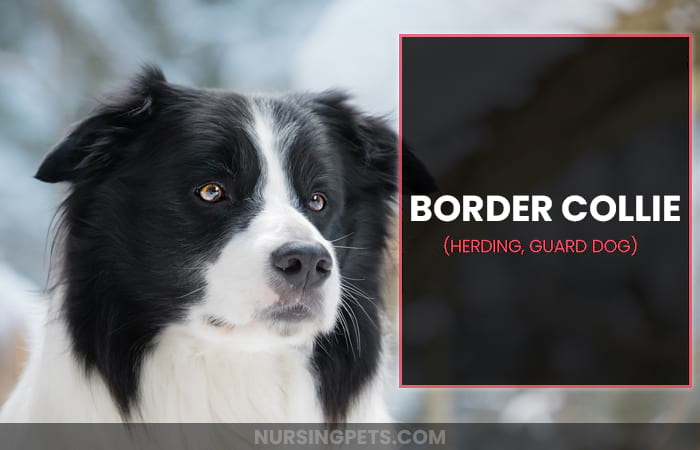
- Origin: Once upon a time, the Border collie was more commonly known as the Scotch sheepdog. Hailing from Northumberland – found on Britain and Scotland’s borders, this canine was breeding from Viking dogs.
- Composition: The Border collie has a more elongate body but is not tall enough. Its double coat is thick that comes in two varieties, and weather resistant. Male breeds stand between 19 and 22 inches tall and weigh between 30 and 45 pounds, whereas females stand between 18 and 21 inches and weigh between 27 and 42 pounds. Their eye is known as “intelligent eyes” – deep brown. Ears are mainly erect or semi-erect, as these dogs always caution their surroundings.
- Applications: Due to the mind-blowing level of trainability, they have found special treatment in numerous working areas. The essential “job” for this breed will continuously be as a grouping canine. Besides, it incorporates to find out bombs and opiates.
2. Poodle (Active, Proud, and Very Smart)

- Origin: The Poodle is the national dog breed of France, and they’re known as the Caniche, or “duck dog.” The breed began as a duck seeker in Germany, where the word “pudelin” alludes to sprinkle in the water. The standard Poodle came into being its improvement as a recovering water canine more than 400 years ago.
- Composition: Poodles come in three different varieties despite all three mixtures having the same construct and extents. Standards are usually more than 15 inches tall, Miniatures are 15 inches or below, and Toys stand no more than 10 inches. They come with Black, White, Apricot, Sable, Cream, Black & White, Grey, Blue, Brown, Silver, and Red. Apparition poodles have tan zones comparable to the focuses on a Doberman pinscher. Male breeds weigh between 60 and 70 pounds, whereas females weigh between 40 and 50 pounds. Its standard height is over 15 inches. Its life expectancy is 10-18 years.
- Applications: Poodles are smart and can be effortlessly trained. They go with their experts into the fight, sparing their experts from passing, capturing spies, and guarding garrison huts, weapons, and other foundations. Poodles have been utilizing the exterior of chasing and military successes for numerous other purposes because of their excellent sense of scent. They have been operating for truffle finding, crowding sheep, and different sorts of animals.
3. German Shepherd (Confident, Courageous, and Smart)

- Origin: The German shepherd,originated in Germany in the late 19th century, dives from the family of German grouping mutts. This breed was first known as Alsatian. During the 1st World War, the American Kennel Club (AKC) changed the breed’s title from German Sheepdog to Shepherd Canine, whereas it reestablished the title to German Shepherd Canine in 1931. People in Britain called the breed Alsatian Wolf dog.
- Composition: The German Shepherd Canine has several compositions, depending on genders. For example, male breeds stand between 24 and 26 inches tall and weigh between 65 and 90 pounds, whereas females stand between 22 and 24 inches and weigh between 50and 70 pounds. Its color is Black, Black & Tan, Sable, Grey, Red & Black, and Black & Silver (that belongs to Herding Group).
- Applications: The German Shepherd can do numerous tasks, including leading the dazzle, chasing down offenders, sniffing out unlawful substances, serving within the military, going by the debilitated, and grouping stock.
4. Golden Retriever (Friendly, Intelligent and Devoted)
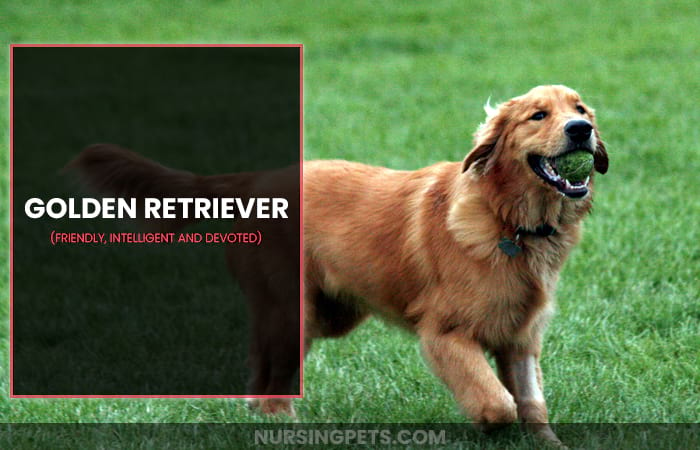
- Origin: The Golden Retriever was respected from the starting of its history in America, but the breed’s ubiquity indeed took off within the 1970s. This breed of canine was created in Scotland within the 19th century as a water retriever to recover shot waterfowl among chasing and shooting parties. The golden retriever appeared in Britain in 1908 and was enrolled with the American Kennel Club in 1925.
- Composition: Male breeds stand between 23 and 24 inches tall and weigh between 65 and 75 pounds, whereas females stand between 21.5 and 22.5 inches and weigh between 55 and 65 pounds. Its life expectancy is 10 to 12 years. It belongs to the sporting group. When it comes to colors, this breed comes in Light Golden, Dark Golden, Cream, and Golden. It’s somewhat longer than tall, with a smooth, capable, ground-covering stride and thick, straight, or wavy external water-repellent coat.
- Applications: Golden Retrievers are also known as Goldens that are adept as a working dog or service animal. They are popular as a guide dog for the blind and a hearing dog for the deaf. Golden Retrievers exceed expectations at recovering fun for seekers, following, sniffing out booty for law requirement, a chasing, and a discovery puppy. They’re moreover familiar competitors and do well in pooch sports such as nimbleness and competitive compliance.
5. Doberman Pinscher (Loyal, Fearless, Alert)
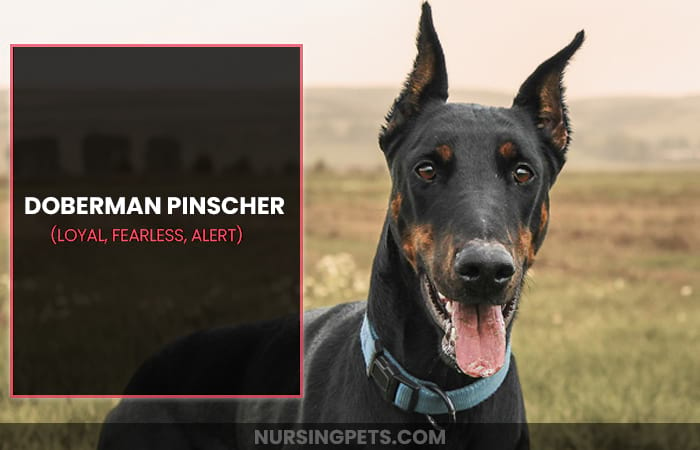
- Origin: Doberman Pinschers, also called Doberman or Dobe, originated in Apolda, Germany, by Karl Friedrich Louis Doberman, a duty collector, during the late 19th-century breed as watchdogs. Their correct family line is obscure, but they’re accepted to be a blend of numerous canine species, counting the Rottweiler, Dark and Tan Terrier, and German Pinscher. The Doberman Pinscher came to the American Kennel Club in 1908 and has since ruled one of America’s most prevalent working breeds.
- Composition: The Doberman or Doberman Pinscher is a medium-large breed of domestic dog usually found in Canada and the United States. Its height is 26-28 inches (male) and 24-26 inches (female) with a weight of 75-100 pounds (male) and 60-90 pounds (female). Its life expectancy is 10-12 years. Its color is White, Black, Fawn, Black & Rust, Red & Rust, Blue, Fawn & Rust, Blue & Rust, and Red. It contains a short, smooth coat with rust markings on the head, throat, chest, base of the tail, and feet and belongs to the working group.
- Applications: Theyperform well in police and military work, canine sports, family guardians and companions, and as a guide dog for the blind.
6. Shetland Sheepdog (Intelligent, Quick, and Obedient)
- Origin: The Shetland sheepdog, frequently known as the Sheltie, was initially bred on the rough Shetland Islands, UK’s northernmost point. When Collies had imported to the island from the Scottish terrain and bred down to Sheltie, the measure could be a detail misplaced to history, as the islands’ breeders cleared out behind no composed records. Shelters lived in virtual confinement from other breeds and were obscured within the rest of Britain until the early 20th century. The Kennel Club (UK) formally recognized this breed in 1909.
- Composition: Theirheight is 13-16 inches with the weight of 15-25 pounds, and the color is Black with white and or tan, blue merle with white or tan, sable with white or tan. Their life expectancy is between 12-14 years that belong to the herding group. Shelties have a twofold coat, where the topcoat comprises long, straight, water-repellent hair, which gives assurance from cold and other harmful things. The undercoat is brief, textured, and exceptionally thick and makes a difference to keep the canine warm.
- Applications: Shetland sheepdog is a small working dog. Within the early days, the breed’s primary duties are to work and group the farmers’ animals.
7. Labrador Retriever (Friendly, Outgoing, and High-Spirited)
- Origin: Labrador retriever, a conventional waterdog, originated in Newfoundland and had brought to Britain by anglers almost 1800. It is an exceptional weapon puppy, reliably ruling field trials. The Canine Club (Britain) recognized the Lab in 1903, and the American Kennel Club enrolled it, to begin with, a puppy of the breed in 1917 and has ruled as America’s favorite breed ever since.
- Composition: Male Labrador retrieverheight is 22.5-24.5 inches, where the female is 21.5-23.5 inches. Its weight is 65-80 pounds (male) and 55-70 pounds (female) with a life expectancy of 10 to 12 years, which belongs to the sporting group. The Labrador retriever’s coat ought to be water-resistant, brief and thick, but not wiry. Its acceptable colors are dark, yellow, and chocolate. The ears hang near to the head and set somewhat over the eyes with powerful jaws; and its “kind,” friendly eyes,
- Applications: They consider as anglers’ collaborates that pulling nets, bringing ropes, and recovering angle from the chilly North Atlantic. In Britain, it has been utilized in military and police work and as a direct canine for the daze.
8. Papillion (Happy, Alert, and Friendly)

- Origin: Papillion had initially bred as charming and mindful companions for noblewomen in Renaissance times by crossing existing toy breeds with spaniels. However, it was within the early breeding centers of Italy and Spain that Paps were refined and popularized. The American Kennel Club enrolled it, to begin with, Papillion in 1915.
- Composition: Papillion, both male and female height is 8-11 inches with the weight for male 7.93664 – 9.9208 pound and female 7.05479- 9.03895 pounds. Its life expectancy is between 14 to 16 years and belongs to the toy group. Its color is White, Sable, Black & White, Fawn & White, Red & White, and White & Chocolate. Ears of this breed are expansive and well bordered, giving them a butterfly wing-like appearance. They can withstand warm, but are touchier to cold temperatures since their single-coated fur, and ought to not clear out exterior unattended in a cold climate.
- Applications: Papillion is brilliant and confident puppies that have a simple time learning up to date traps. Moreover, they may be extraordinarily perky and tender, known as fabulous guard dogs, but you can also find them in the shelters or rescue groups.
9. Bloodhound (Friendly, Independent, Inquisitive)
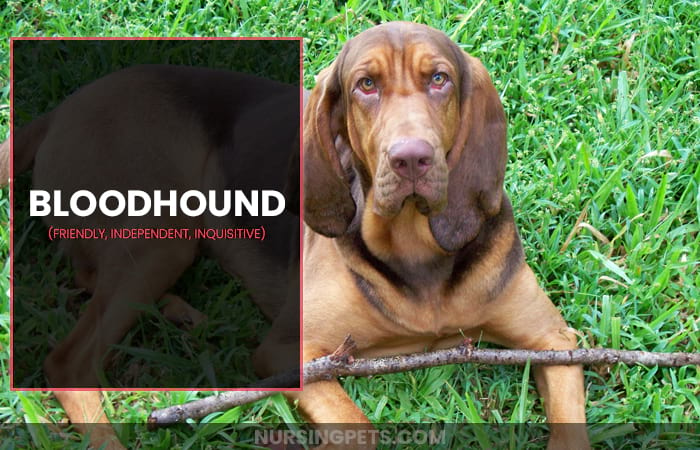
- Origin: Bloodhounds also have other names, such as sleuth dogs, Chien de Saint-Hubert, and the Saint Hubert Hound. There’s tiny known about Bloodhounds’ early period, but a few specialists say the breed was known around the antiquated Mediterranean. They were given the title “blooded dogs” since of their carefully tended purebred parentage. William the Champion is credited with bringing these dogs to Britain in 1066. This breed has been known in America since the mid-1800s.
- Composition: It belongs to Hound Group with 25-27 inches (male) and 23-25 inches (female). Their weight is 90-110 pounds (male) and 80-100 pounds (female). Life expectancy is between 10-12 years. It has brief hair and long ears and comes in three colors Dark and Tan, Liver and Tan (Ruddy and Tan), and Ruddy (Brownish).
- Applications: The breed is well-known as an excellent working trailer, not as a pet. Usually, it has been utilizing in tracking creatures with the help of its unrivaled sense of smell. In trailing people, for law authorization or protection operations, it was the only breed of dog a court of law accepted their identifications.
10. Rottweiler (Loyal, Loving, Confident Guardian)
- Origin: The legal history of the breed dates back to 1901, with the generation of the primary standard Rottweiler by the Worldwide Club for Leonbergers and Rottweiler Mutts in Germany. The American Kennel Club authoritatively recognized the breed in 1931.
- Composition: The male Rottweiler is95-135 pounds with a height of 24-27 inches, and the bitch is 80-100 pounds with 22-25 inches height. Their life expectancy is 9 to 10 years. They are generally dark with rust to mahogany markings where their undercoat is gray, tan, or black. When he moves, he shows quality and stamina. His eyes are warm, dark-brown pools reflecting a smooth, cleverly, alarmed, and brave expression and ears of medium and pendant, triangular shape.
- Applications: The Rottweiler pulling a cart stacked with meat straight from the butcher starting the Center Ages to approximately 1900, carrying cash in a neck pocket to advertise. It has also served as a watchdog, a drover’s puppy, a draft puppy, a protect puppy, and a police puppy.
Frequently Asked Questions (FAQs)
1. Do Smart Dogs Make Better Pets?
Answer: Although smart dogs are not always better pets, they can sometimes be good pets.
2. Are Bigger Dogs Smarter Than Small Dogs?
Answer: Yes, bigger dogs are smarter than small dogs. Research published in the scientific journal Animal Cognition headed by Daniel Horschler of the School of Anthropology at the University of Arizona in Tucson.
3. What is the number 1 smartest dog breed?
Answer: The Border Collie is the number 1 smartest dog breed. This is A workaholic breed that is prized for its insights, exceptional intuition, and working capacity.
4. What is the least intelligent dog breed?
Answer: Top 13 least intelligent dog breed is –
- Basset Hound
- Shih Tzu
- Lhasa Apso
- Chihuahua
- Bull Terrier
- The Great Pyrenees
- Mastiff
- Beagle
- Bloodhound
- Borzoi
- Chow Chow
- Bulldog
- Afghan Hound
5. What Is The Least Smelly Dog?
Answer: The best canine breeds that are the least smelly dog breeds regularly contain a much littler sebaceous organ. The least smelly dog is –
- Bichon Frise
- Basenji
- Dachshund
- Havanese
- Maltese
- Labradoodle
- Poodle
- Schnauzer
- Shih Tzu
- West Highland terrier
- Whippet
Final Verdict
Now that you know what are the smartest dog breeds, you can choose one according to your requirements. Although we’ve talked about the ten smartest dog breeds, you should check which breed can learn the most traps and commands through preparing and perception.
Your chosen dog breed should have both versatile and intuitive insights with the ability to cope with new circumstances. However, we hope you’ve learned a lot about the smartest dog breeds. If you’re feeling any problem, feel free to let us know.


